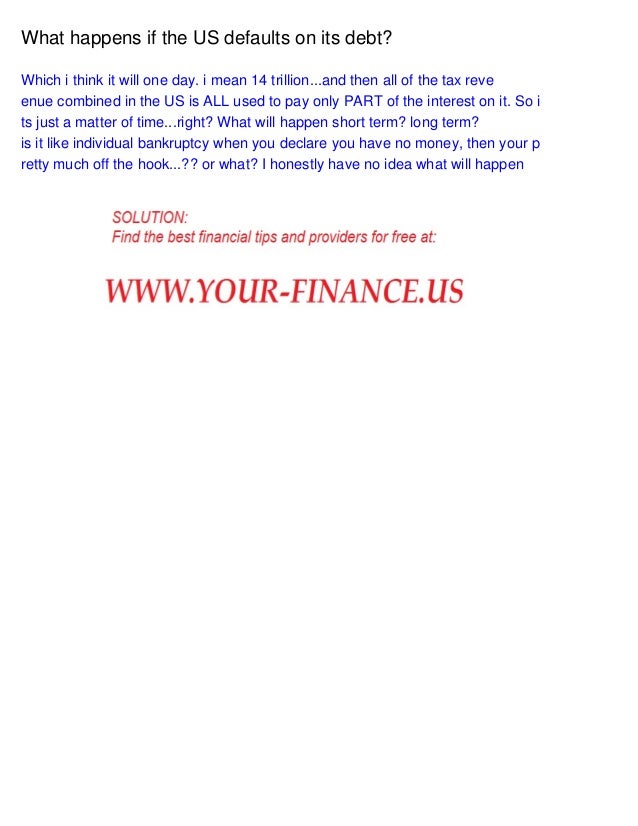

In “ American Default ,” his highly interesting political history of this event, Sebastian Edwards concludes that it was an “excusable default,” but clearly a default. “As much as I deplore this refusal to fulfill the solemn promise of bonds of the United States,” wrote Justice Harlan Stone, a member of the majority, “the government, through exercise of its sovereign power…has rendered itself immune from liability,” demonstrating the classic risk of lending to a sovereign. The case went ultimately to the Supreme Court, which on a 5-4 vote, upheld the sovereign power of the government to default if it chose to. Then it refused to do so, offering depreciated paper currency instead. The United States had in clear and entirely unambiguous terms promised the bondholders to redeem these bonds in gold coin. government took to printing pure paper money, or “greenbacks,” which during the war fell to significant discounts against gold, depending particularly on the military fortunes of the Union armies. government’s demand notes in early 1862, caused by the Treasury’s financial difficulties trying to pay for the Civil War. There have been four explicit defaults on its debt before. If the United States government did default now, it would be the fifth time, not the first. Not once,” and telling the Senate Banking Committee that if Congress does not raise the debt ceiling, “America would default for the first time in history.” has always paid its bills on time” and “The U.S. Now Treasury Secretary Yellen has joined the unfailing chorus, writing that “The U.S. government has never defaulted on its debt!” Every time, this claim is false. government’s debt gets close to the debt ceiling, and people start worrying about a possible default, the Treasury Department, under either party, says the same thing: “The U.S. to afford all the stuff it imports from abroad, and with it Americans’ standard of living would fall.Every time the U.S. The combination of all this would make it a lot harder for the U.S.
#If the u s defaults on its debt series#
default would set off a series of events, including a depreciating dollar and surging inflation, that I believe would likely lead to the abandonment of the U.S. Without this status, Americans simply wouldn’t be able to maintain their current standard of living.Ī U.S. dollar could also lose its unique place in the world as its primary “ unit of account,” which means that it is widely used in global finance and trade. economy would most likely sink back into recession.Īnd that’s just the start. The dollar’s value could collapse, and the U.S. Tens of millions of Americans and thousands of companies that depend on government support could suffer. Investors such as pension funds and banks holding U.S. That would most likely trigger a default. If Congress doesn’t suspend or raise the debt ceiling, the government would not be able to borrow additional funds to meet its obligations, including interest payments to bondholders.

The Social Security Administration holds around $2.9 trillion in national debt, which is financed with surplus revenue.Īmong the largest nonfederal institutions that hold Treasury debt are private pension funds.Īltogether, the Federal Reserve, government and nongovernment pension funds hold about half of U.S. The Fed buys Treasury bonds when it wants to increase the supply of money in the economy and currently owns around one-fifth of the Treasury debt.

Treasury owes money to other parts of the government as part of an accounting procedure. The Treasury had been using “extraordinary measures” to finance government spending in lieu of an extension, but those measures were due to expire within weeks.Īlthough this includes money due to lenders and investors both overseas and in the U.S., a sizeble chunk is money that the federal government owes itself – the U.S. That is above the debt ceiling of $28.4 trillion set by Congress earlier this year. The amount owed is the national debt, which currently stands at US$28.43 trillion. Bondholders lend the government a set amount of money to be paid back with interest over a certain time frame. It can also print money through the Federal Reserve.īut when the first two options don’t supply enough cash to pay the bills, the Treasury can borrow the difference by issuing bonds and selling them on the world’s financial markets. It can use revenue from taxes and fees approved by Congress but collected by the Treasury. The Treasury Department has three sources. Understanding those consequences begins with looking at how the U.S.


 0 kommentar(er)
0 kommentar(er)
